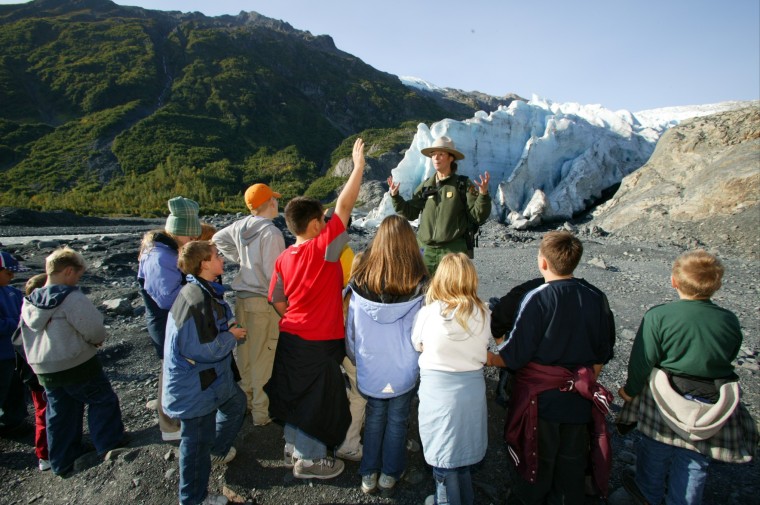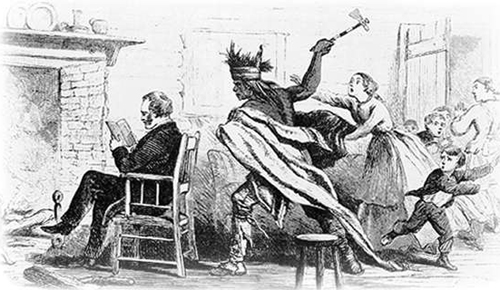Imperiled Promise: The State of History in the National Park Service
The National Park Service has a great responsibility. It protects human stories and nature. As much as “two-thirds of the system’s nearly four hundred parks exist explicitly to protect and interpret cultural and historic resources.” (11) The NPS encourages education and claims that its core purpose is history. The NPS states that its wish is to “explore whether the present practice of history in the agency is sufficiently robust, current, and flexible enough to enable the NPS to fulfill its promise of creating an inspired, informed, and thinking citizenry.” (12)
The NPS is always evolving and learning new techniques as well as new ways to strengthen and improve its mission. Including history is of utmost importance. History is central to the work of serving the American public. The NPS admits that “for far too long, academe’s own culture and structure have prevented many talented scholars from engaging with history in the national parks—in effect reinforcing the insularity that NPS practices build from within, and preventing us from recognizing and nurturing our common purpose” (17).
The public must be engaged, interested, and educated. In order to achieve this, the NPS has agreed to lift social media restrictions, and the effect is that they “are seeing hints of its potential to reach new publics” (43). Using Facebook and Twitter is one way the NPS is keeping up with what the public expects.
At Antietam National Battlefield, the NPS allows onlookers to imagine themselves as Confederate soldiers standing in the Sunken Road, about to be killed by Union soldiers but then explains how a poster in the Antietam visitor center is supposed to “transport us back” to the bloodiest day in American history (45). Can a poster achieve this?
The National Park Service sought to “strengthen its presentation and interpretation of history” and so it collaborated with the Organization of American Historians (50). The OAH-NPS partnership, as well as the strengthened relationships between the NPS and the America Historical Association benefit the park, academic historians, as well as visitors. This collaboration “creates a lively, vibrant, and innovative history practice at the NPS” (53).
While the NPS views its achievements as examples of “lively, vibrant, and innovative history practices” others disagree (53). Some described NPS history as awful and “stagnant and irrelevant to today’s generation and issues” (53). The NPS wants to correct this and it wants to answer genuine questions that the public asks and connect with visitors. To correct the problems, the NPS stresses the importance of leadership for history, which “is not only abstract and inspirational; it is also a managerial reality” (60). The NPS also recommends better training for interpretational needs as well as staff training. It recommends updating qualification standards and “prioritizing hiring master’s level historians” (74). Building trust is also an important aspect to the NPS. The public can handle controversies in history. The NPS seeks a revitalized history program that will engage the public and “guarantee NPS historical stewardship into the future” (119).

Photo courtesy of HomeRoom- http://blog.ed.gov/2013/11/the-national-parks-americas-best-idea-for-authentic-learning/
The Whitman Massacre in 1847 is told through two different sites: the NPS and Historylink.org.
According to Historylink.org, the Whitmans were cordial with the Cuyuses and “Tiloukaikt, a kind, friendly Indian, welcomed the Whitman’s baby as a “Cayuse te-mi” (Cayuse girl).” Soon Whitman steered his focus away from the Indians and began attracting white settlers. The combination of thousands of settlers and the measles outraged the Cuyuse, who eventually killed fourteen people. Five of the Cuyuse were surrendered to prevent war, including the friendly Tiloukaikt, who was sentenced to death.

The Whitman Massacre- Image courtesy of legendsofamerica.com
In the NPS version of the massacre, the agency asks the public if it was “Revenge or Retribution”. The public can make up their own mind by viewing Facebook posts, You Tube videos, or reading “1,000 pages about the Whitmans.” The public is encouraged to educate themselves through various portals on the site.
In “Uncomfortable History: The `Whitman Massacre’” from The Seattle Times, Keiko Morris explains how the Whitman’s “aura of glory has faded sharply five decades later, in a time of greater respect for cultural differences.” Whitman is no longer only viewed as a hero, even though a 9-foot bronze statue of Marcus Whitman still stands in Walla Walla. The truth of the American experience is tragic, complex, and often brutal. It is multi-sided and according to Superintendent Terry Darby, “you can’t live this close to an Indian community and not be sensitive to their view,” Darby said. “We want to show both points of view and not alienate one. So if it sounds like I’m waltzing through a minefield, I am.”

While posters can work fantastically for propaganda, I don’t think that it could instill the fear that someone about to die would experience. If the poster was to remain, it may be more beneficial to add in more supporting imagery, such as sound and smell. The sound of gunfire, of the smell of gunpowder and the yelling of people would make it more powerful, as it would begin to overload the senses with complimentary information.
LikeLiked by 1 person